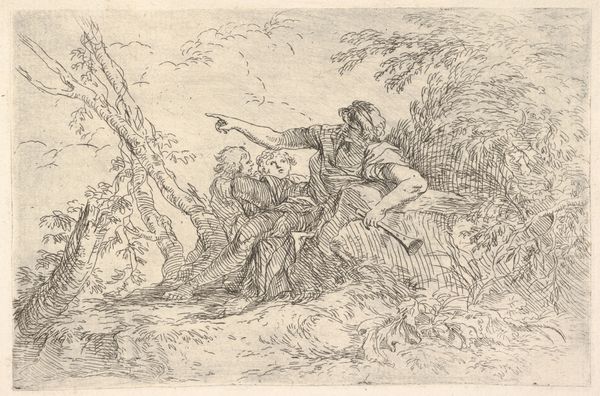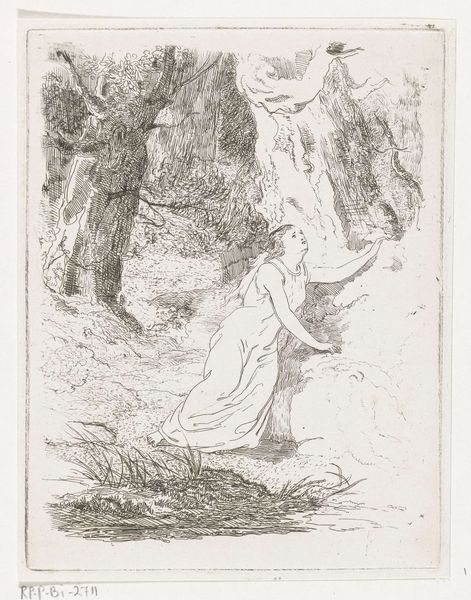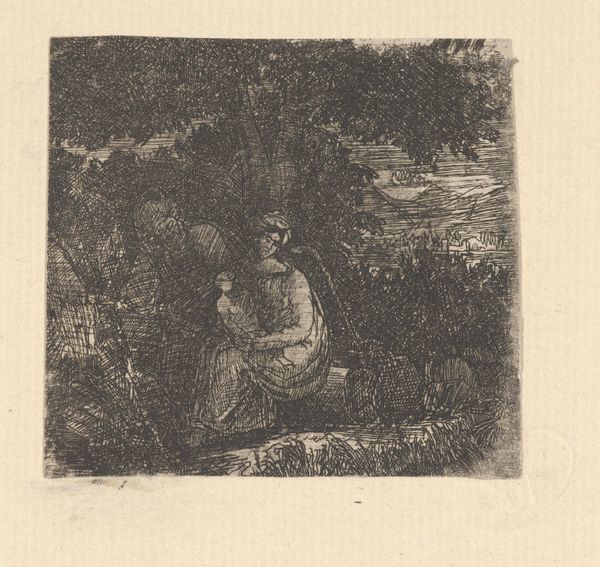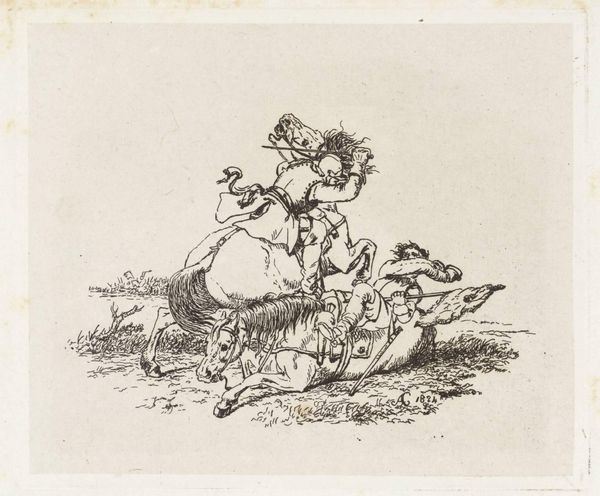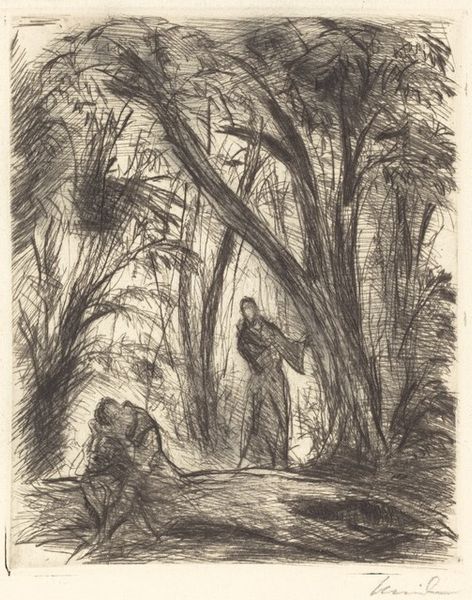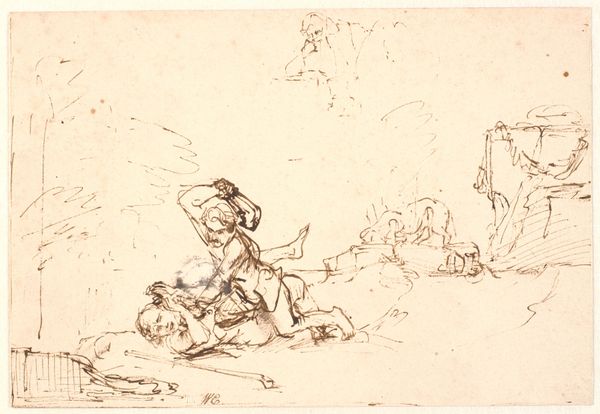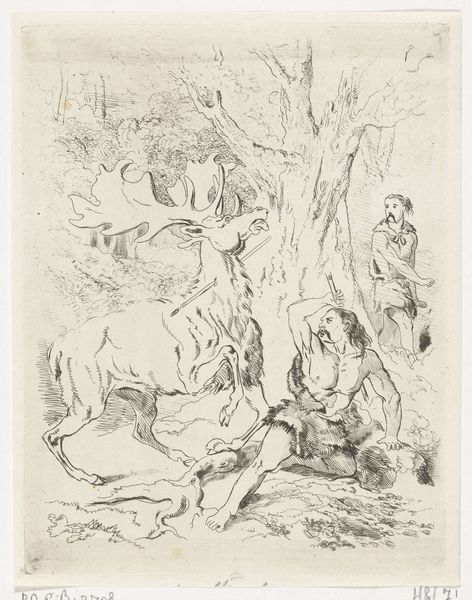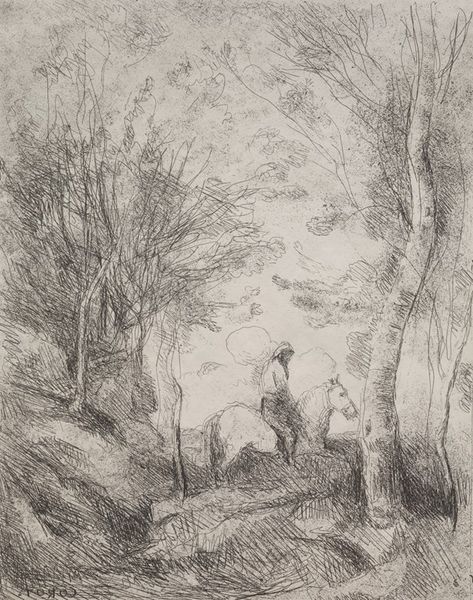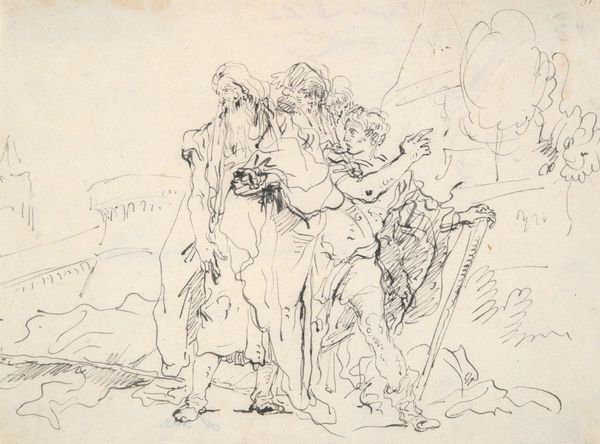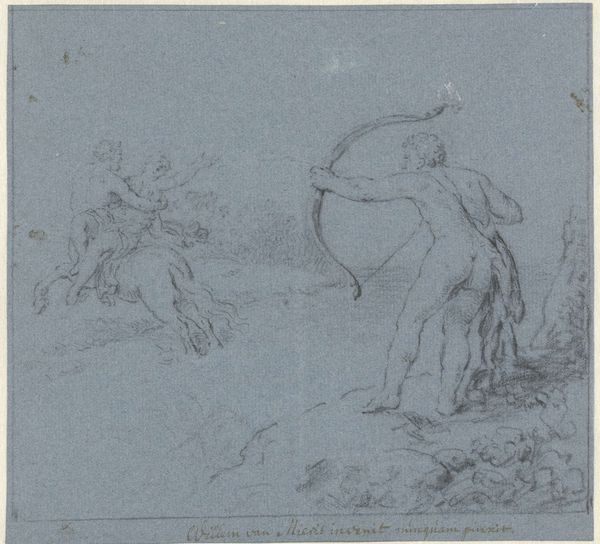
print, etching
#
ink drawing
#
baroque
# print
#
etching
#
landscape
#
etching
#
figuration
#
genre-painting
Dimensions: 108 mm (height) x 163 mm (width) (billedmaal)
Salvator Rosa made this etching of a shepherd with two children in a landscape in the 17th century. It presents an idealised vision of rural life in Italy, a theme that reflected both nostalgia and a growing interest in nature at the time. The image’s meaning is rooted in its cultural context. Rosa, as a Neapolitan, was likely influenced by the region’s history of pastoral imagery and classical mythology, visual codes that evoked an imagined golden age. The shepherd, acting as a guide, becomes a metaphor for knowledge and understanding, teaching the next generation about the world. The church and the court both shaped this artistic production. Rosa's work embodies the era’s social and intellectual currents, reflecting a longing for simpler times, while perhaps also critiquing the complexities of urban life. As historians, we can delve into period literature, social studies, and institutional records to better understand the values and beliefs that shaped this work. Ultimately, art history illuminates the contingent meanings embedded within the images.
Comments
No comments
Be the first to comment and join the conversation on the ultimate creative platform.

